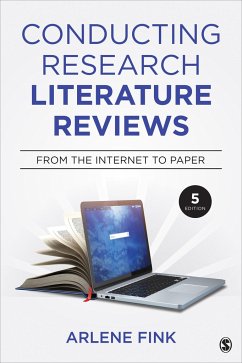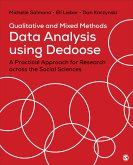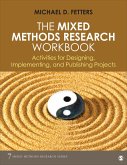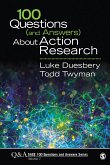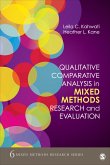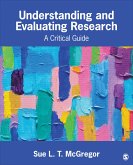Arlene G. Fink (UCLA, Los Angeles, USA)
Conducting Research Literature Reviews
From the Internet to Paper
Schade – dieser Artikel ist leider ausverkauft. Sobald wir wissen, ob und wann der Artikel wieder verfügbar ist, informieren wir Sie an dieser Stelle.
Arlene G. Fink (UCLA, Los Angeles, USA)
Conducting Research Literature Reviews
From the Internet to Paper
- Broschiertes Buch
- Merkliste
- Auf die Merkliste
- Bewerten Bewerten
- Teilen
- Produkt teilen
- Produkterinnerung
- Produkterinnerung
Students and researchers across the social sciences
Andere Kunden interessierten sich auch für
![Qualitative and Mixed Methods Data Analysis Using Dedoose Qualitative and Mixed Methods Data Analysis Using Dedoose]() Michelle SalmonaQualitative and Mixed Methods Data Analysis Using Dedoose62,99 €
Michelle SalmonaQualitative and Mixed Methods Data Analysis Using Dedoose62,99 €![The Mixed Methods Research Workbook The Mixed Methods Research Workbook]() Michael D. FettersThe Mixed Methods Research Workbook62,99 €
Michael D. FettersThe Mixed Methods Research Workbook62,99 €![100 Questions (and Answers) about Action Research 100 Questions (and Answers) about Action Research]() Luke S. Duesbery100 Questions (and Answers) about Action Research54,99 €
Luke S. Duesbery100 Questions (and Answers) about Action Research54,99 €![Conducting Educational Research Conducting Educational Research]() Daniel Joseph BoudahConducting Educational Research114,99 €
Daniel Joseph BoudahConducting Educational Research114,99 €![Qualitative Comparative Analysis in Mixed Methods Research and Evaluation Qualitative Comparative Analysis in Mixed Methods Research and Evaluation]() Leila KahwatiQualitative Comparative Analysis in Mixed Methods Research and Evaluation80,99 €
Leila KahwatiQualitative Comparative Analysis in Mixed Methods Research and Evaluation80,99 €![Enhancing Communication & Collaboration in Interdisciplinary Research Enhancing Communication & Collaboration in Interdisciplinary Research]() Enhancing Communication & Collaboration in Interdisciplinary Research86,99 €
Enhancing Communication & Collaboration in Interdisciplinary Research86,99 €![Understanding and Evaluating Research Understanding and Evaluating Research]() Sue L. T. McGregorUnderstanding and Evaluating Research157,99 €
Sue L. T. McGregorUnderstanding and Evaluating Research157,99 €-
-
-
Produktdetails
- Produktdetails
- Verlag: SAGE Publications Inc
- 5 Revised edition
- Seitenzahl: 304
- Erscheinungstermin: 28. Februar 2019
- Englisch
- Abmessung: 230mm x 150mm x 20mm
- Gewicht: 440g
- ISBN-13: 9781544318479
- ISBN-10: 1544318472
- Artikelnr.: 53540321
- Herstellerkennzeichnung
- Libri GmbH
- Europaallee 1
- 36244 Bad Hersfeld
- gpsr@libri.de
- Verlag: SAGE Publications Inc
- 5 Revised edition
- Seitenzahl: 304
- Erscheinungstermin: 28. Februar 2019
- Englisch
- Abmessung: 230mm x 150mm x 20mm
- Gewicht: 440g
- ISBN-13: 9781544318479
- ISBN-10: 1544318472
- Artikelnr.: 53540321
- Herstellerkennzeichnung
- Libri GmbH
- Europaallee 1
- 36244 Bad Hersfeld
- gpsr@libri.de
Arlene Fink (PhD) is Professor of Medicine and Public Health at the University of California, Los Angeles, and president of the Langley Research Institute. Her main interests include evaluation and survey research and the conduct of research literature reviews as well as the evaluation of their quality. Dr. Fink has conducted scores of evaluation studies in public health, medicine, and education. She is on the faculty of UCLA's Robert Wood Johnson Clinical Scholars Program and is a scientific and evaluation advisor to UCLA's Gambling Studies and IMPACT (Improving Access, Counseling & Treatment for Californians with Prostate Cancer) programs. She consults nationally and internationally for agencies such as L'institut de Promotion del la Prévention Secondaire en Addictologie (IPPSA) in Paris, France, and Peninsula Health in Victoria, Australia. Professor Fink has taught and lectured extensively all over the world and is the author of more than 130 peer-reviewed articles and 15 textbooks.
Preface
Acknowledgments
About the Author
PART I. Research Design and Sampling
Chapter 1: Reviewing the Literature: Why? For Whom? How?
What is a Research Literature Review? Why Do One?
Gaining Control: Experiments and Observations
Systematic, Explicit, Comprehensive, and Reproducible: Four Key Words
Choosing an Online Bibliographic Database
How Do You Ask for Information? Searching With Boolean Operators
Pausing during the Search
Changing the Course of the Search
Supplementing the Online Search
Organizing the Research Literature: Building a Virtual Filing Cabinet
Chapter 2: Searching and Screening: The Practical Screen and Methodological
Quality
Search Screen 1: The Practical Screen
Search Screen 2: Methodological Quality Screening Criteria
Observational Designs in Brief
A Note on Other Designs and Studies: Cross-Sectional Surveys and Consensus
Statements
Internal and External Validity
Criterion for Quality: Sampling
The Sampling Unit
The Size of the Sample
Response Rate
PART II. Data Collection, Interventions, Analysis, Results, and Conclusions
Chapter 3: Searching and Screening: Methodological Quality
Data Collection and Data Sources: Methods and Measures
Interventions and Programs: Reviewing the Research Literature to Find out
What Works
Data Analysis: Statistical Methods in the Research Literature
Accounting for Impact
Chapter 4: Doing the Review: A Reader's Guide Chapter
Types of Information: Methods and Content
Eligibility and Actuality
Reporting Standards: Checklists for Research Writing and Reviewing
How TREND Was Used in a Literature Review
Reliable and Valid Reviews
Uniform Data Collection: The Literature Review Survey Questionnaire
Uniform Data Collection: Definitions and More
Pilot Testing the Review Process
Establishing Validity
Monitoring Quality
Chapter 5: What Did You Find? Synthesizing Results
Now that You Have Done It, What Do You Do With It?
Descriptive Syntheses or Reviews
Meta-Synthesis
Meta-Analysis
Meta-Analyses in Practice: Examples
Glossary
Author Index
Subject Index
Acknowledgments
About the Author
PART I. Research Design and Sampling
Chapter 1: Reviewing the Literature: Why? For Whom? How?
What is a Research Literature Review? Why Do One?
Gaining Control: Experiments and Observations
Systematic, Explicit, Comprehensive, and Reproducible: Four Key Words
Choosing an Online Bibliographic Database
How Do You Ask for Information? Searching With Boolean Operators
Pausing during the Search
Changing the Course of the Search
Supplementing the Online Search
Organizing the Research Literature: Building a Virtual Filing Cabinet
Chapter 2: Searching and Screening: The Practical Screen and Methodological
Quality
Search Screen 1: The Practical Screen
Search Screen 2: Methodological Quality Screening Criteria
Observational Designs in Brief
A Note on Other Designs and Studies: Cross-Sectional Surveys and Consensus
Statements
Internal and External Validity
Criterion for Quality: Sampling
The Sampling Unit
The Size of the Sample
Response Rate
PART II. Data Collection, Interventions, Analysis, Results, and Conclusions
Chapter 3: Searching and Screening: Methodological Quality
Data Collection and Data Sources: Methods and Measures
Interventions and Programs: Reviewing the Research Literature to Find out
What Works
Data Analysis: Statistical Methods in the Research Literature
Accounting for Impact
Chapter 4: Doing the Review: A Reader's Guide Chapter
Types of Information: Methods and Content
Eligibility and Actuality
Reporting Standards: Checklists for Research Writing and Reviewing
How TREND Was Used in a Literature Review
Reliable and Valid Reviews
Uniform Data Collection: The Literature Review Survey Questionnaire
Uniform Data Collection: Definitions and More
Pilot Testing the Review Process
Establishing Validity
Monitoring Quality
Chapter 5: What Did You Find? Synthesizing Results
Now that You Have Done It, What Do You Do With It?
Descriptive Syntheses or Reviews
Meta-Synthesis
Meta-Analysis
Meta-Analyses in Practice: Examples
Glossary
Author Index
Subject Index
Preface
Acknowledgments
About the Author
PART I. Research Design and Sampling
Chapter 1: Reviewing the Literature: Why? For Whom? How?
What is a Research Literature Review? Why Do One?
Gaining Control: Experiments and Observations
Systematic, Explicit, Comprehensive, and Reproducible: Four Key Words
Choosing an Online Bibliographic Database
How Do You Ask for Information? Searching With Boolean Operators
Pausing during the Search
Changing the Course of the Search
Supplementing the Online Search
Organizing the Research Literature: Building a Virtual Filing Cabinet
Chapter 2: Searching and Screening: The Practical Screen and Methodological
Quality
Search Screen 1: The Practical Screen
Search Screen 2: Methodological Quality Screening Criteria
Observational Designs in Brief
A Note on Other Designs and Studies: Cross-Sectional Surveys and Consensus
Statements
Internal and External Validity
Criterion for Quality: Sampling
The Sampling Unit
The Size of the Sample
Response Rate
PART II. Data Collection, Interventions, Analysis, Results, and Conclusions
Chapter 3: Searching and Screening: Methodological Quality
Data Collection and Data Sources: Methods and Measures
Interventions and Programs: Reviewing the Research Literature to Find out
What Works
Data Analysis: Statistical Methods in the Research Literature
Accounting for Impact
Chapter 4: Doing the Review: A Reader's Guide Chapter
Types of Information: Methods and Content
Eligibility and Actuality
Reporting Standards: Checklists for Research Writing and Reviewing
How TREND Was Used in a Literature Review
Reliable and Valid Reviews
Uniform Data Collection: The Literature Review Survey Questionnaire
Uniform Data Collection: Definitions and More
Pilot Testing the Review Process
Establishing Validity
Monitoring Quality
Chapter 5: What Did You Find? Synthesizing Results
Now that You Have Done It, What Do You Do With It?
Descriptive Syntheses or Reviews
Meta-Synthesis
Meta-Analysis
Meta-Analyses in Practice: Examples
Glossary
Author Index
Subject Index
Acknowledgments
About the Author
PART I. Research Design and Sampling
Chapter 1: Reviewing the Literature: Why? For Whom? How?
What is a Research Literature Review? Why Do One?
Gaining Control: Experiments and Observations
Systematic, Explicit, Comprehensive, and Reproducible: Four Key Words
Choosing an Online Bibliographic Database
How Do You Ask for Information? Searching With Boolean Operators
Pausing during the Search
Changing the Course of the Search
Supplementing the Online Search
Organizing the Research Literature: Building a Virtual Filing Cabinet
Chapter 2: Searching and Screening: The Practical Screen and Methodological
Quality
Search Screen 1: The Practical Screen
Search Screen 2: Methodological Quality Screening Criteria
Observational Designs in Brief
A Note on Other Designs and Studies: Cross-Sectional Surveys and Consensus
Statements
Internal and External Validity
Criterion for Quality: Sampling
The Sampling Unit
The Size of the Sample
Response Rate
PART II. Data Collection, Interventions, Analysis, Results, and Conclusions
Chapter 3: Searching and Screening: Methodological Quality
Data Collection and Data Sources: Methods and Measures
Interventions and Programs: Reviewing the Research Literature to Find out
What Works
Data Analysis: Statistical Methods in the Research Literature
Accounting for Impact
Chapter 4: Doing the Review: A Reader's Guide Chapter
Types of Information: Methods and Content
Eligibility and Actuality
Reporting Standards: Checklists for Research Writing and Reviewing
How TREND Was Used in a Literature Review
Reliable and Valid Reviews
Uniform Data Collection: The Literature Review Survey Questionnaire
Uniform Data Collection: Definitions and More
Pilot Testing the Review Process
Establishing Validity
Monitoring Quality
Chapter 5: What Did You Find? Synthesizing Results
Now that You Have Done It, What Do You Do With It?
Descriptive Syntheses or Reviews
Meta-Synthesis
Meta-Analysis
Meta-Analyses in Practice: Examples
Glossary
Author Index
Subject Index

